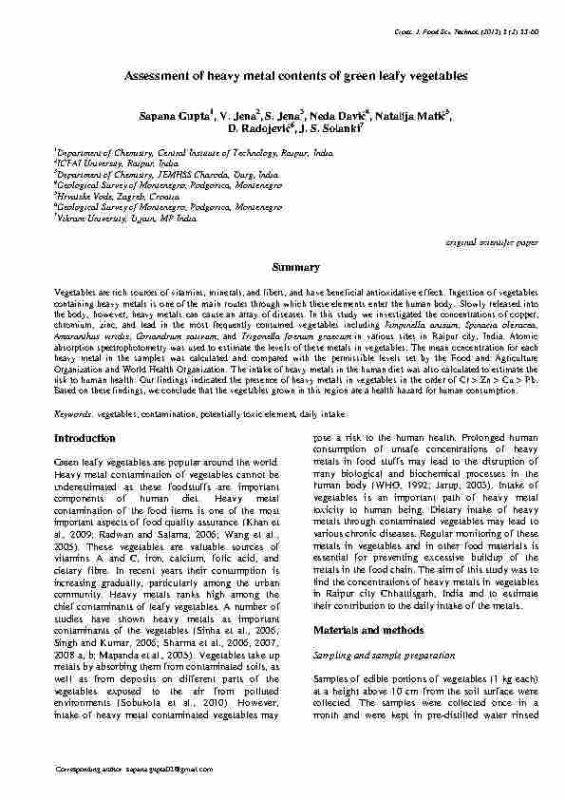Article Assessment of heavy metal contents of green leafy vegetables
24/08/2024
DOCUMENT DESCRIPTION
Vegetables are rich sources of vitamins, minerals, and fibers, and have beneficial antioxidative effects. Ingestion of vegetables containing heavy metals is one of the main routes through which these elements enter the human body. Slowly released into the body, however, heavy metals can cause an array of diseases. In this study, we investigated the concentrations of copper, chromium, zinc, and lead in the most frequently consumed vegetables including Pimpinella anisum, Spinacia oleracea, Amaranthus viridis, Coriandrum sativum, and Trigonella foenum-graecum in various sites in Raipur city, India.
Atomic absorption spectrophotometry was used to estimate the levels of these metals in vegetables. The mean concentration for each heavy metal in the samples was calculated and compared with the permissible levels set by the Food and Agriculture Organization and World Health Organization. The intake of heavy metals in the human diet was also calculated to estimate the risk to human health. Our findings indicated the presence of heavy metals in vegetables in the order of Cr > Zn > Cu > Pb. Based on these findings, we conclude that the vegetables grown in this region are a health hazard for human consumption.
Keywords: vegetables, contamination, potentially toxic element, daily intake


